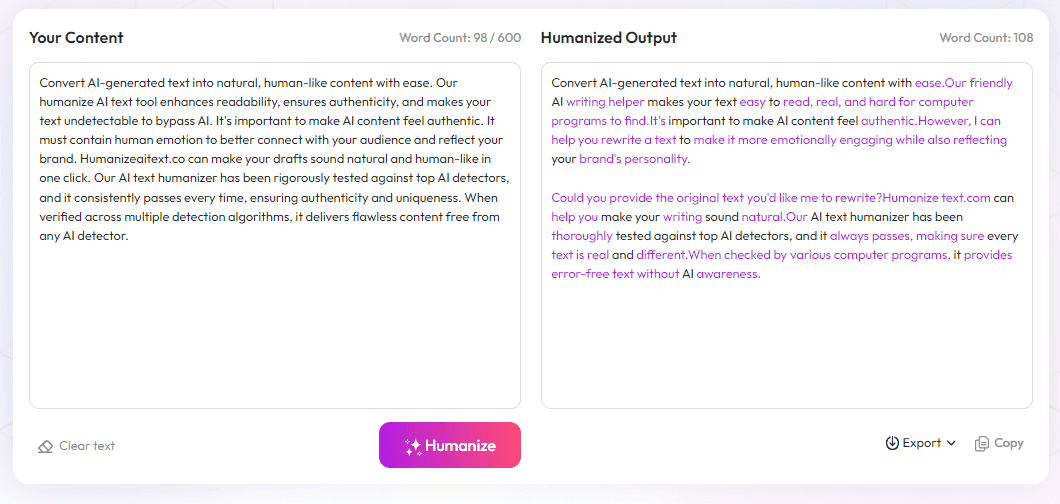Table of Contents
Many people feel unsure about how publishing can stay secure and fair in today’s digital world. Blockchain promises to make rights, royalties, and content management easier and more trustworthy. Keep reading, and I’ll show you how this technology might change publishing by 2025—making things simpler for creators and readers alike. In just a few points, you'll see practical ways blockchain is set to shake up the industry.
Key Takeaways
Key Takeaways
- Blockchain makes ownership clear and permanent, preventing rights disputes and unauthorized use.
- Smart contracts automate payments and rights management, reducing delays and middlemen.
- Real-time, transparent sales tracking helps ensure fair pay for authors and creators.
- Secure identity records cut down on fraud and make licensing simpler and faster.
- Licensing and rights can be handled automatically with blockchain, speeding up deals and lowering costs.
- Digital certificates and provenance info help verify the authenticity of rare or digital books.
- Microtransactions and subscriptions become easier through blockchain-based payments, opening new revenue options.
- Educational credentials and author profiles can be securely stored and verified using blockchain technology.
- Future licensing models will be more automated, making rights transfers faster and more reliable.
- Decentralized platforms give authors more control, allowing them to publish globally without traditional gatekeepers.
- Challenges like scalability, adoption, legal rules, and environmental concerns still need solutions for wider use.

When people think about "blockchain in publishing," they often imagine a world where copyrights are crystal clear, royalties are paid instantly, and content ownership is secure forever. In fact, blockchain technology is revolutionizing how publishers, authors, and readers interact, making the entire industry more transparent and fair. By 2025, blockchain will enable creators to record their work on immutable ledgers, ensuring proof of ownership that can't be disputed. To put it simply, creators will no longer have to worry about lost rights or unauthorized use—because their ownership will be embedded directly into the blockchain.
Smart contracts will become the backbone of rights management. These programmable agreements automatically execute when conditions are met, such as releasing payments when an ebook is purchased or a license is renewed. Platforms like KodakOne are already helping photographers guard their images digitally, and similar systems will spread across the publishing world. For example, an author could set a smart contract to receive royalties instantly from each download or read, cutting out middlemen and making revenue more predictable.
Ensuring fair pay will be easier than ever. Readers might buy publications directly from authors through blockchain-enabled platforms, enabling real-time payments and transparent tracking of sales. This drops the need for complex royalty calculations and disputes, as every transaction is recorded on the blockchain. For instance, platforms such as Audius have shown how musicians can earn instantly from their streaming, and publishing could adopt similar models for writers and artists.
Managing identities securely will also become simpler. Blockchain can provide tamper-proof records of author and publisher credentials, making it clear who owns what and eliminating fraud. Decentralized databases will allow publishers to share rights information securely, while creators can monetize their profiles without fear of identity theft or misrepresentation.
Among the most promising applications is faster, safer rights licensing. Instead of lengthy negotiations and paperwork, rights can be registered, licensed, and tracked automatically via blockchain. Smart contracts will handle all the tracking, licensing, and payments, reducing costs and disputes significantly. For authors, this means less waiting and more confidence in how their work is being used and rewarded.
Beyond copyright protection, blockchain will help authenticate digital editions and verify the provenance of rare or collectible books. This will prevent forgery and theft, providing readers and collectors with confidence that a rare edition is genuine. Additionally, micropayments for per-read or subscription-based content will become straightforward, allowing publishers to innovative revenue streams without complicated payment systems.
Secure credentials for educational content and credentials will also benefit from blockchain. Certification of courses, degrees, and author attributions will be stored securely, reducing fraud and ensuring trustworthiness across the entire educational publishing ecosystem.
Leading blockchain platforms like Ethereum will continue to power smart contracts and tokens, while private networks such as Hyperledger Fabric might be used by large publishers requiring restricted access. Content attribution networks like MediaChain will help assign rightful authorship and ownership, minimizing disputes and streamlining rights management.
Getting started with blockchain in publishing is easier than you might think. Focus on automating rights and using NFTs to represent copyrights and royalties. There are many practical tools and frameworks emerging in 2025 that allow creators to experiment without needing to be blockchain experts. For example, authors can mint NFTs for their works, ensuring they always retain control and receive fair compensation.
But, as with any new tech, challenges remain. Scalability issues, adoption hurdles, and legal questions about governance are present. Still, the potential to streamline publishing, secure content, and create transparent transactions makes blockchain a game-changer for anyone serious about fair and efficient content distribution.

9. Tracking and Verifying Content Provenance to Prevent Forgeries
Authenticating the origin and history of digital editions becomes much easier with blockchain.
It ensures that a book’s provenance can be traced back to its original creator, making forgery nearly impossible.
This is especially useful for rare and collectible items, where authenticity adds significant value.
Using blockchain-based certificates of authenticity allows readers and collectors to verify a book’s legitimacy instantly.
For example, publishers can embed a blockchain record into each digital edition, showing its complete ownership and transfer history.
This approach also helps in confirming the legitimacy of signed copies or limited editions, adding trust for buyers.
Platform solutions like **Verisart** provide blockchain-based certificates for art and collectibles that could be adapted for rare books.
By integrating such verification methods, publishers reduce fraud risks and boost buyer confidence in their offerings.
10. Simplifying Microtransactions and Supporting Subscription Models
Blockchain makes tiny payments straightforward, opening the door for innovative revenue streams.
Readers can pay per article, per chapter, or even per page without complicated payment setups.
This is perfect for niche content, academic papers, or serial stories where fans want to support creators directly.
Subscription-based models, like those seen in **Sora** or **UpContent**, benefit from transparent, automated royalty calculations.
Using blockchain-based tokens, publishers can issue digital currencies for use within their platforms, encouraging ongoing engagement.
For example, readers might buy a small amount of crypto tokens that can be spent on specific content, with smart contracts handling payments automatically.
This process reduces transaction fees and delays, making small-value purchases more feasible and appealing.
11. Blockchain’s Role in Educating and Certifying Future Authors
Blockchain can help in verifying educational credentials, training certifications, and author attributions.
Educational publishers can issue tamper-proof digital diplomas or certificates for courses completed online.
Authors can use blockchain to prove their credentials, making their profiles more trustworthy for publishers or agents.
Some platforms are already experimenting with certificate management, like **Poex.io**, which enables verifiable digital certificates.
By doing so, aspiring writers can showcase their skills and credentials confidently, helping them find publishing opportunities more easily.
Additionally, universities and training programs can record course completions securely, reducing fraud and enhancing reputation.
This creates a more trustworthy ecosystem where authors and educators co-exist with transparent records.
12. The Future of Content Licensing with Blockchain Automation
Licensing rights no longer need to involve lengthy negotiations and paper documents.
Smart contracts enable automatic registration, licensing, and enforcement of rights on the blockchain.
Once a license is issued, the smart contract handles all tracking and royalty payments without manual intervention.
This reduces administrative overhead and minimizes disputes caused by miscommunication or lost paperwork.
For instance, a publisher could license a story to an audiobook platform, with the smart contract managing payments each time the audiobook is streamed.
Platforms like **Polkadot** or **EOS** are experimenting with decentralized licensing frameworks that could be adopted by publishers.
As licensing becomes more transparent and automatic, smaller publishers will benefit from quicker, cheaper rights transfer processes—opening new collaboration opportunities.
13. Moving Toward a Decentralized Publishing Ecosystem
Blockchain supports the idea of a more open, borderless publishing landscape.
Decentralized platforms allow authors and publishers to bypass traditional gatekeepers and self-publish globally.
This means more authors can reach audiences directly, with fewer intermediaries taking cuts.
Platforms like **Decentraland** or **IPFS** enable content distribution without relying on central servers or corporations.
Authors can upload their work once and manage permissions, royalties, and updates through smart contracts.
Readers can discover new works via decentralized catalogs with transparent licensing terms.
This approach fosters a more democratic publishing environment, giving control back to creators and consumers alike.
14. Challenges and Risks of Blockchain Adoption in Publishing
Despite all the benefits, blockchain isn't without hurdles.
Scalability remains a concern—many blockchain networks struggle with high transaction volumes or slow processing times.
Adoption is slow, partly because many creators and publishers are unfamiliar with the technology or hesitant to shift structures.
Legal questions around intellectual property, data privacy, and jurisdiction are still unresolved.
There’s also a need for clear standards and interoperability among platforms to avoid fragmentation.
For instance, a copyright token on one platform might not transfer or be recognized on another, creating confusion.
Moreover, the energy consumption of some blockchains raises environmental concerns and could affect industry acceptance.
Balancing innovation with practical implementation, legal clarity, and environmental impacts will shape how blockchain moves forward in publishing.
FAQs
Blockchain creates permanent records of ownership and uses smart contracts to manage rights and automated payments, ensuring content creators retain control and receive proper compensation for their work.
Blockchain enables direct and real-time payments from readers or listeners to creators, removing middlemen and increasing revenue efficiency for artists, authors, and publishers.
Blockchain streamlines licensing through smart contracts that automate tracking and payments, reducing delays, disputes, and administrative costs for licensors and licensees.
Platforms like Ethereum facilitate smart contracts and tokens, Hyperledger Fabric offers private ledgers, and MediaChain supports content attribution and ownership, all aiding publishers in managing digital rights.



